I’ve made it clear in previous installments in this series that jet fighters are simply incapable of doing Close Air Support, let alone general reconnaissance, with the exception of looking for surface ships in the navy. They have horrible endurance and non-existent low speed performance, making them incapable of finding targets on the ground in the first place.

Long range sensors do not help this, as they require zooming in on the target in order to regain level of detail, and sacrificing the area which can be observed. They are only useful for doing surveillance of already found items, such as buildings, construction sites, and the like.
So with that being said, what specifically do we have in mind when we talk about low altitude airplanes?
There are a number of various terms for what is essentially the same plane. Forward Air Controller (FAC), Armed Air Recon (AAR), Light Attack Armed Reconnaissance (LARA), Counter Insurgency (COIN). What these planes need to do is essentially just putter about in an area essentially being a flying infantryman in various ways.
As shown in the video above, these planes were used to do routine patrols over Vietnam, looking for evidence of the North Vietnamese Army. They were used to help the artillery coordinate accurate fire, both spotting the areas to shell as well as the accuracy of the fire itself. They were used with fighter/bombers like the F4, which don’t have the endurance or low speed performance to find anything, and these prop aircraft would shoot coloured smoke rockets in the right area to help them. They also served as helicopters escorts. And of course, they could be used as direct fire support for the infantry.
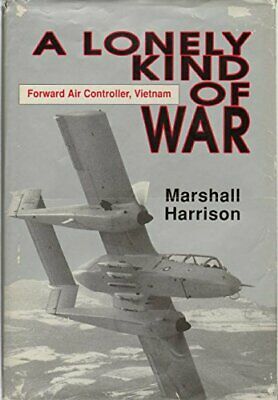
It’s simply not possible to use a no-endurance, no-low speed performance jet to do all of this, and bloviation about “muh sensor package,” or any other nonsense buzzword should be immediately dismissed. However, I may have given the audience the wrong impression when I went on about the ultra light STOL planes such as the Zenith CH-701, pictured below.

A lot of the time, maybe even most of the time that these planes fly, they’re not going to be taking even small arms fire. But the problem is that when they do find the enemy, the enemy has found them, and a plane that is completely unarmoured against even small arms is pretty vulnerable.

O-1 BirdDog
There is no precise altitude where a plane is immune to small arms fire. The higher they fly, the harder they are to hit, and the lower energy said bullets will have due to wind resistance. Practical experience told pilots to be above 5,000 feet, or below 500. I say below, because as Marshall Harrison detailed in his autobiography, there are practical difficulties that a plane forces when it flies at really low altitude.
- Harrison, Marshall. A Lonely Kind of War: Forward Air Controller, Vietnam.
Announcing that I was in for the mark, I pushed the throttles on the Garrett engines to 100 percent power, rolled inverted, picked my spot, and rolled upright again but in a seventy-degree dive. The lighted sight in the windscreen drifted onto the target and I punched the button on the stick that fired the smoke rockets. From among the trees surrounding the blast areas, I saw the sparkle of automatic weapon fire begin once more. Tracers drifted toward me, then fell away rapidly, curving well behind the aircraft. An optical illusion. Unconsciously, I had scrunched into as small a ball as possible, my ass trying to bite chunks out of the seat cushion. Which way to turn? Most of us thought it was best to just plow straight ahead and not give the gunners any more belly than necessary.Everyone except headquarters agreed that treetop flying was about the safest place to be when taking ground fire. This reduced the gunner’s tracking time tremendously. You couldn’t be a pussy about it though; you really had to get down to where you were just clearing the trees or you had set yourself up to be blown from the sky.
Not getting hit with bullets is a percentage game. And of course, when flying at that altitude, the inevitable will happen, as we see in the next paragraph.
As I was literally lifting over the taller trees, another small hole appeared in my lower left canopy. I wouldn’t have noticed it except for the new stream of fresh air.
The other, pre-existing small holes being bulletholes of course. And keep in mind, this was the OV-10 Bronco. It had the bottom of the cockpit armoured against small arms fire.

Seeking the path of least resistance, I shoved the rudders from one limit to another, skidding the aircraft away from the areas of most intense ground fire. Finally reaching calm waters again, I pulled the stick back into my belly, trying to gain all the altitude that I could, as quickly as possible. Level at 4,000 feet. That should put me well above the AK fire. The larger guns would have no problem reaching me here, but I had a pretty good idea where they were and they couldn’t get the angle on me in my present position. Fever Lead was shouting at me over the radio.
And this wasn’t even the Marshall Harrison and his Bronco doing CAS like some aerial version of Rambo, this was just him doing forward air control for F-100’s. He’s just trying to coordinate some bomb runs and he’s getting holes shot in his plane.

Like this, but for planes.
Not having a plane that is armoured drastically reduces the effective roles that it can fulfill. At low level flying, they just flat out need to be armoured. And they also need relatively powerful engines to help them climb out of low altitude quickly.
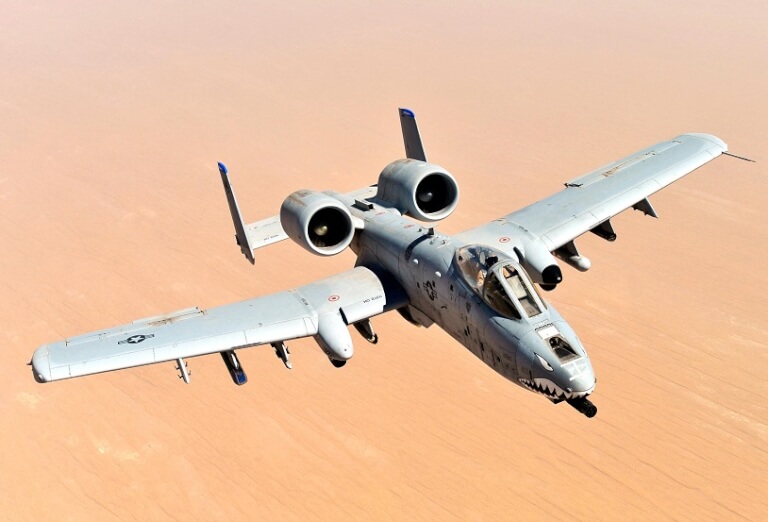
Not exactly a fuel efficient plane well capable of doing boring recon/patrol missions.
A great study, that I can’t find the link to now, was done where the designers of the A-10 did a huge number of interviews with downed pilots, pilots who shot down other planes, and gun camera footage, and concluded that, somewhat surprisingly, the number one cause of downed planes is fuel fires. Second is loss of control of the airplane, and a distant third is direct injury to the pilot. The numbers being somewhere around 60%|30%|10%.
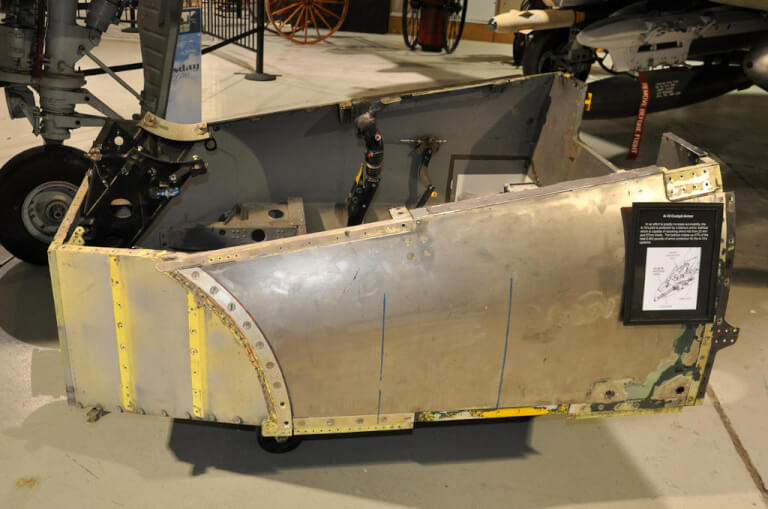
For pilot protection, the A-10 has that Titanium armour “bathtub,” that weighs around 1,200 lbs to protect the pilot. But it also has thick, self-sealing fuel tanks, engines mounted on pylons, and non-flammable hydraulics to protect it against fuel fires. It also has a backup manual flight control system in case the hydraulics are shot out, and non-fully retractable landing gear in case the landing gear actuators, or the system that controls them, have been damaged.
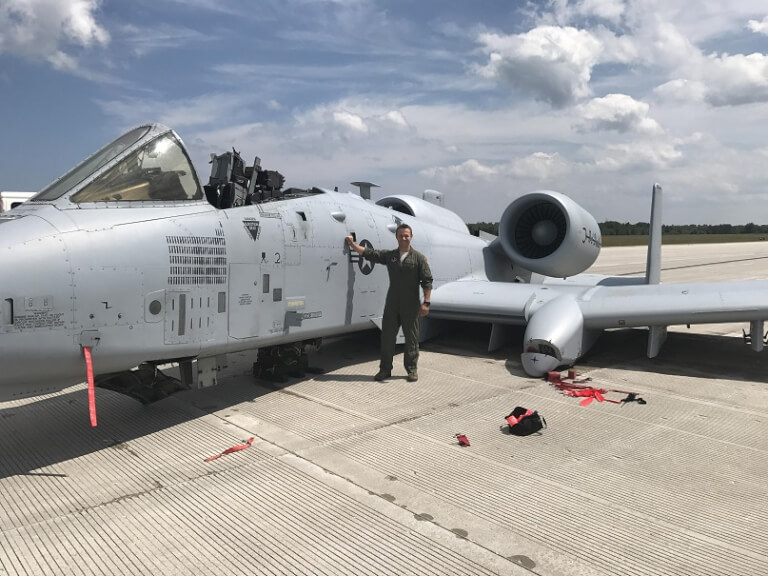
A-10 after “belly” landing.
Unfortunately, titanium doesn’t exactly grow on trees. While the financial cost to the taxpayer is somewhat irrelevant, there is only so much titanium in existence, let alone that we can get our hands on. But even if we straight up copied the 1,200 lbs bathtub design, and shoved this into our Zenith CH-701, we would have some serious problems.
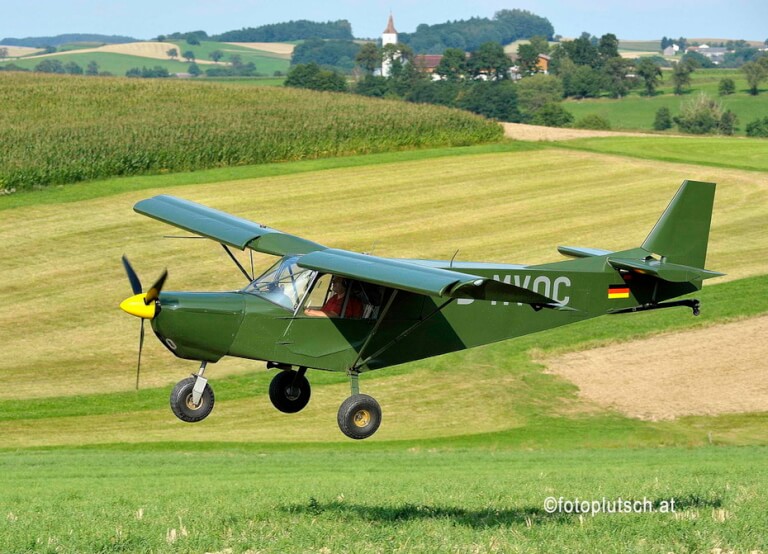
And by serious problems I mean the landing gear would probably snap. The plane you see above weighs about 750 lbs when empty, and about 1,200 lbs with the pilot and fuel inside. So we just doubled the entire weight of the plane only with armour.

It gets much worse than that if we want to use steel, a more abundant material. If we’re using steel, how much do we need to use to stop various threats? Let’s take a look at the claims of a manufacturer to find out, at least as a ballpark guess.
These steels are in principal a 500-type steel with slightly higher carbon content- around 0.31%.The HHA steels shall be bendable weldable and not sensitive to fatigue.
To stop NATO standard 5.56 mm calibre bullet SS109 normally 5.5 mm thick steel is needed.
In order to stop an AR-15 round, we need 5.5mm thick steel, or around 1/5th of an inch. That doesn’t sound like much, but it all adds up. Putting a single thin plate of high hardness steel on the bottom of our plane gives us the most bang for our buck. That’s the reason the pilots in the Vietnam video above sat on their flak jackets. The most likely bullet to hit the pilot would come from below.
If we want to get the most value for the weight added, what would be the absolute minimum dimensions we would need, assuming a fairly narrow single seater? Eyeballing it, we’d need something like just under 1 meter across, and just over 1 meter in length. Call it 1 square meter, at 5mm thickness. This gives us 0.005 cubic meters of steel. I’m sure it varies based on the type of steel, but a variety of sources claim that steel has a density of around 7,900 kg/m^3. That works out to about 39.5 kilograms, or around 89 pounds.

Steel plate body armour. We’d need a larger size.
That’s pretty doable, and it shows why some people use steel body armour. If all you need to do is stop 5.56 in a small area, it’s not that big of a deal to add less than 100 lbs to our plane to accomplish just that. We would need some kevlar, or other spall liner behind this, so that bits of metal fragmentation don’t fly into our pilot, but that’s not cripplingly heavy either.
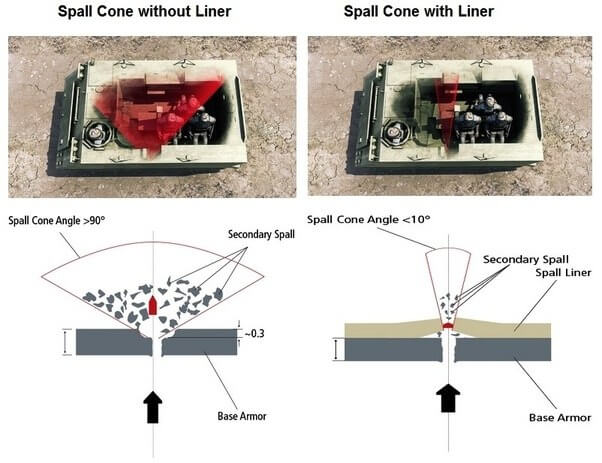
You can get bits of metal flying off even without penetration due to the pressure causing the steel to bulge on the inside and break off.
Unfortunately, if we want to armour against general purpose machine guns, which shoot 7.62, we are going to need more armour.
This solution enables protection against EN1522 FB7 – 7.62 x 51 AP. With this solution you go from (including tolerances) 15 mm stand-alone steel to an 11 mm combination offering a weight saving of 25 percent and a cost reduction for steel.
They’re talking about using a variety of methods to reduce armour thickness, and therefore weight. Mostly they’re talking about perforated armour, and spaced armour. This article is not going into various exotic armour setups, because that’s not the point. The point is that if we want to be armoured against 7.62, or at least AP 7.62 rounds, even just against some of the bottom of the plane, we’re going to need something like 250-300 lbs of steel added to the bottom of our plane.

We’d need a plate at the front behind the engine, the sides beneath the windows, all along the bottom, and behind the pilot.
And that’s just a tiny patch. Really, we’re going to need many multiples more, just to encase the pilot in armour. Eyeballing it, we’d need at least 5x more, which would work out to somewhere around 1,500 lbs of steel.
And that’s with the glass being entirely penetrable. Bulletproof glass is extremely weight-inefficient for the armour that we get, and the multiple inches of thickness don’t just weigh the plane down, but make it harder for the pilot to see. This was tried all around the cockpit with the HS-129 in WW2.
Then there were the design problems. The Hs 129 was slow, with a top speed of less than 200 miles per hour when fully loaded. The plane’s three-inch-thick canopy glass impeded the pilot’s view.
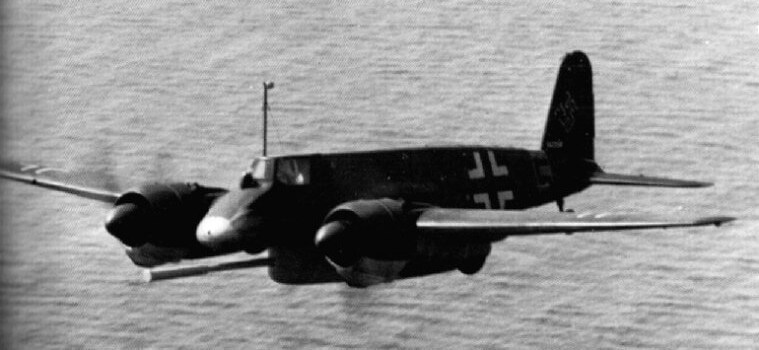
HS-129.
The A-10 is claimed to have “bulletproof glass,” which doesn’t really mean anything in particular. I’m skeptical of how much punishment it can take, but it’s theoretically possible that it can withstand small arms. After all, the Humvee has about three inches of bulletproof glass and can stop 7.62 with some reliability.
Although the glass cracks so much that you won’t be able to see much after being shot at.

Better than getting shot I suppose.
According to Wikipedia we are going to need almost 2 and a half inches to stop regular 7.62 rounds. Let’s say that’s three inches for any sort of AP round, although it could well be more. If we wanted to add three inches of bulletproof glass to our cockpit, just to be armoured against GPMG’s, then how much weight would we need to add to our plane? According to that same page, the weight is something like 165 kg’s per m^2, if we need the ~75mm thickness.
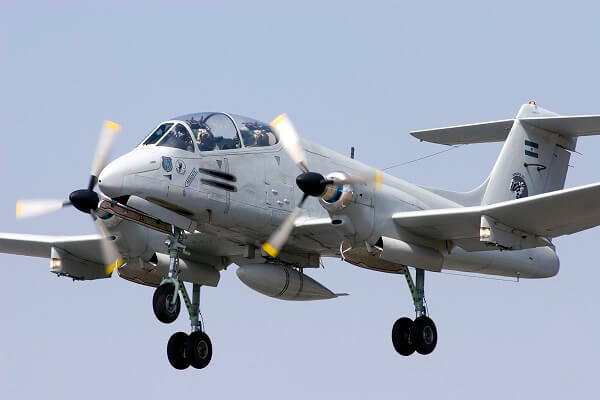
IA-58 Pucara.
Even just the front of our cockpit is going to have an area of something like one square meter, at minimum. Which means that we need 165 kilograms of extra weight, or around 370 lbs. And that’s just the very front part.
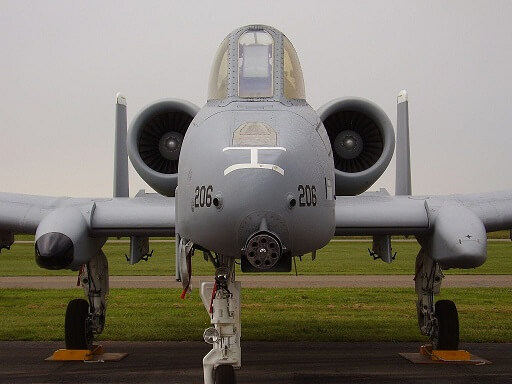
A-10 Warthog.
Even big planes like the A-10 don’t have thick bulletproof glass all around the cockpit, because it is so damn heavy. They instead rely on the plane being very hard to hit from those weird angles, allowing them to have drastically less thickness in those areas. It’s not really worth my time to estimate the exact thickness, but even with something like 1/5th the thickness, relying on angling, you can more than double the total weight of the bulletproof glass, simply because there is so much more of it. So let’s say another 500 lbs or so, bringing our cumulative bulletproof glass weight to nearly 1,000 lbs.
If we truly wanted a pilot that is armoured against just 7.62, we’re going to be needing to add something like 2,500 lbs of armour between the steel airframe around the pilot and the cockpit glass. Yes, with titanium alloys we can bring this down. Yes, we can play around with spaced armour. Yes, we can try some other exotic combinations. But none of that changes the reality that we’re adding serious amounts of weight to our plane. And we’re not even getting into 50 cals, or the Russian 14.5mm heavy machine guns.
Above we see what 12.7mm rounds can do to three inches of steel. And what it can do is blow right through one of them and penetrate deep into the next.

The A-10 titanium bathtub has thickness ranging from 13mm, or about half an inch, to 38mm, or about an inch and a half. I can believe that an inch and a half of titanium can stop heavy machine gun rounds, although I’m not betting my life on that. But even here, the thinner parts of the bathtub most certainly cannot.

Let’s not even get into the utter impossibility of making bulletproof glass that can withstand 50 cals reliably. I’m sure we can do it, but probably at something like well over a foot in thickness. It’s not even worth considering.
UNDERSTANDING THE WEIGHT SPIRAL

We could probably add a small, 5mm thick steel plate to the bottom of our Zenith CH-701 without too much difficulty. After all, that’s going to be around 100 lbs, possibly less. That doesn’t give us tremendous armouring, but should be thought of as the absolute bare minimum that we need. But remember, the airframe and engine combine to weight just 750 lbs. If we tried to add 2,500 lbs or so to be armoured against GPMG’s, well…
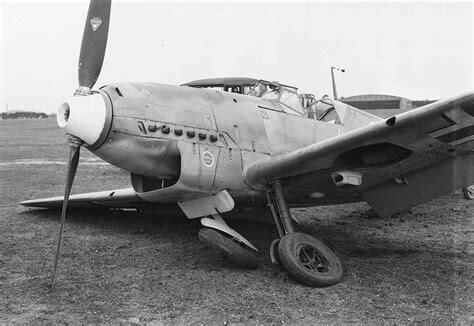
Right off the bat, the landing gear would just collapse on us. Maybe not when simply sitting there on the field, although maybe even then, but certainly on hard takeoffs and landings. Hell, maybe even if we hit a little bump while taxxing.

Those little strips of metal are all we need when we have a maximum takeoff and landing weight of 1,200 lbs. If we blimped that up to almost 4,000 lbs, our landing gear is going to snap. The only way to get stronger landing gear is to add more structural reinforcement, and that means more weight.
The landing gear includes all rolling components, struts, and activating mechanisms. The landing gear weight may be estimated as a function of gross weight alone, but the relationship is not linear. This is not a problem because the weight fraction of the landing gear is nearly constant at about 3.8–4.5% of the gross weight for aircraft whose weight exceeds 10,000 lbs.
That study didn’t take a close look at smaller planes, but we’ll assume a fairly similar weight increase. So we’re looking at increasing the weight of our landing gear from about 48 lbs, call it 50, to about 160 lbs. An increase of 110 lbs just so that we can takeoff and land the plane again.
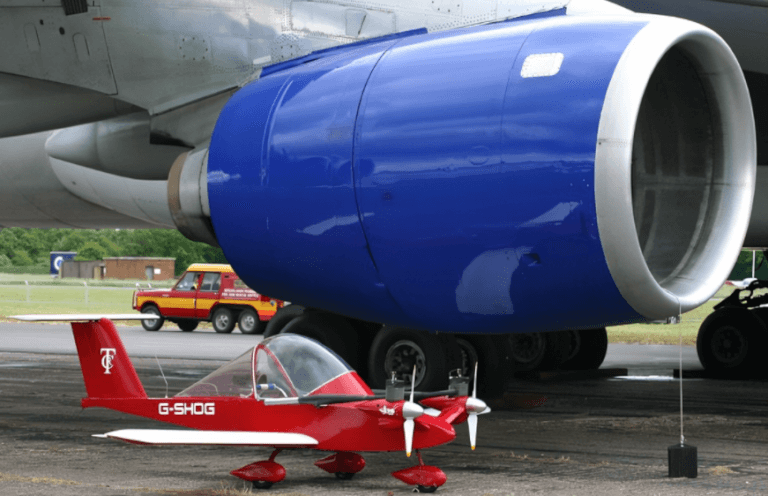
CriCri plane next to passenger airliner engine.
But we’re not done just with the landing gear. The Zenith CH-701 has a 100 Hp Rotax 912 engine, and a max takeoff weight of around 1,200 lbs. This gives it a 1:12 Hp:lbs ratio, which is decent, but fairly low. The old Piper Cherokee that I used to fly has around a 1:10 Hp:lbs ratio, even better with one person inside, which is more common for prop aircraft.
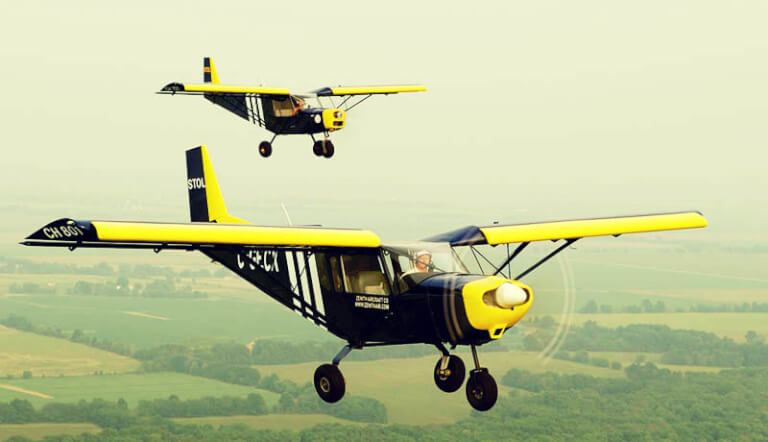
Imagine some lead weights on the bottom of the plane that quadruple its total weight.
Unfortunately the planes T/W ratio is about 1/4 what it was. Even to keep the very low Hp:lbs ratio of about 1:12 that it previously had, we need 4x more horsepower. That’s going to necessitate going from the roughly 130 lbs Rotax 912 engine, to something like the Lycoming IO-720, which weighs about 600 lbs.
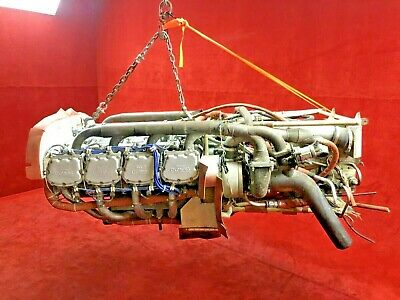
Lycoming IO-720
Even if we assume that such a large engine can fit inside of the current design, which it can’t, this is an additional 470 lbs of engine that we need to add. But we’re not done yet.

Because when we ballooned our weight from ~1,200 lbs to ~4,000 lbs, we roughly quartered our lift/speed ratio. This means that we need to fly twice as fast just to produce the same amount of lift in terms of G forces. This actually gives us far more than double the takeoff and landing distance in terms of roll, which is most of the entire point of the CH-701 design.
As I’ve shown earlier, smaller planes just have inherently better lift/speed ratios, because lift is proportional to surface area, as opposed to volume. We can never really get that lift back, but if we tried we would need to double the wingspan and chord.
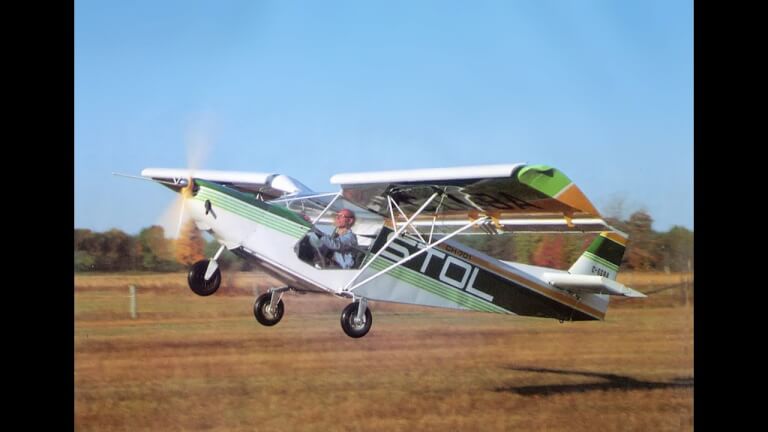
Unfortunately I don’t know the exact weight of the Zenith’s wings. Even worse, this gets more complicated, since increasing the wingspan adds more torque to both the end of the wing as well as the attachment to the frame, so you need even more structural strength than simply a linear increase. Gliders can get away with huge wingspans, because they don’t have to support a lot of weight. Gliders aren’t designed to make 10G turns, and the gliders themselves are extremely light.
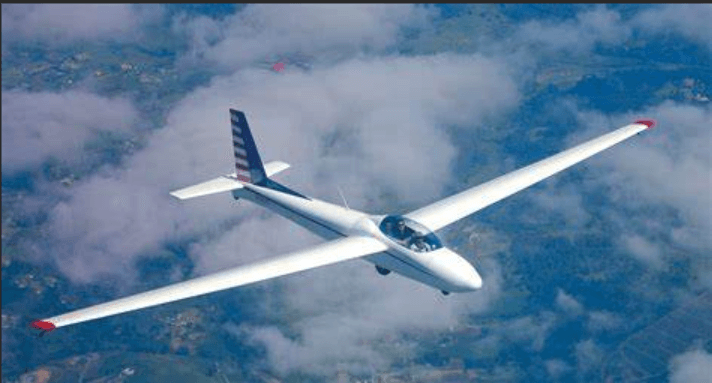
You can’t perfectly calculate the increased wing weight. It’s complicated. But I’ll just go ahead and say that we currently have about 200 lbs of structural strength in the wing, and that would be increased to 800 lbs. It would probably be more, but let’s say it’s that, for a 600 lbs increase.

This increased wing size also solves another issue for us. The plane has about 150 lbs of fuel onboard. But now that it has a 4x more powerful engine, we’re going to need 4x as much fuel. So that brings us to 600 lbs of onboard fuel, a 450 lbs increase.

First we added 2,500 lbs of armour to the STOL 701 design. This necessitated the addition of 110 lbs of landing gear reinforcement, 470 lbs more engine, 600 lbs more wing, and 450 lbs more fuel, with the last only being entirely true on takeoff. All told, that’s an additional 1,630 lbs. This brings our total plane weight from ~4,000 lbs to 5,630 lbs.

Except, hold on a second. When putting the new landing gear on, we assumed a weight of 4,000 lbs. The same was true for the engine, wings, and onboard fuel. But the addition of that added more weight, so now we need even stronger and heavier landing gear, a bigger engine, more wing, and more fuel.

The increase of 2,500 lbs of armour lead to an increase of about 1,600 lbs as we rebalanced our plane. That was an additional weight increase of about 64%. But now our plane is overweight again, so we will once again need to rebalance our design. Assuming another 64% weight increase from this, we’ve added another 1,024 lbs to our plane, bringing it up to about 6,600 lbs. Except… it’s now overweight again. So we need to add ~650 lbs of landing gear, engines, wing structure and fuel. But now it’s overweight again at 7,250 lbs.

If you’re curious where this ends up, there’s a formula for it that I can’t remember now. I guess grade 12 math is too distant in the past. Something or other about natural logs. Anyway, we eventually converge on a weight just over 8,000 lbs. Yes, you read that correctly. Our ~1,000 lbs plane had 2,500 lbs added onto it in terms of armour, and now weighs over 8,000 lbs.

In fairness, piston engines are heavy relative to turboprops. Going to a larger turboprop is a smaller weight increase. In addition to that, we probably wouldn’t try to increase the wing proportionally, simply accepting increased takeoff and landing speeds, as well as decreased lift for any given speed. But even if we could get to a point where the weight increase we get from adding more engines, landing gear, wing size/strength, and fuel are just 50% the increase in weight that necessitated them, we will eventually converge on a design that adds just as much weight re-balancing as it did for the heavy thing in the first place.
Here’s a general rule for you.
Every pound of weight we add to a plane brings a friend. And even after rebalancing the design, something still has to give, with the lift/speed ratio being the most likely candidate. And of course, fuel consumption in absolute terms. All of this is true in reverse for taking weight off the plane.
Small increases in weight may not necessitate a re-design of the plane, but they will then diminish performance directly.

Planes are more tolerant of weight than helicopters, especially if we don’t need STOL performance. The helicopter must counteract this weight increase constantly, while the plane uses its wings to generate lift.
Even still, decreasing weight on the plane is of the absolute utmost importance. Everything that adds weight to the plane must strictly justify its existence if we actually care about performance, and not just making profits off the plane.

As I said in the last piece, the Military Industrial Complex would very much like you to believe that these aircraft are designed and manufactured the way that F1 cars are. With teams of autists pouring over every last little piece, trying to shave the weight off, down to the last gram. Desperately trying to eak out a 0.02% reduction in drag. Clawing with their fingernails to get the absolute last tiny little performance improvement that they can.

Riiiiiight.
Below is a fantastic article written by W.H. Beckett, one of the two men, along with K.P. Rice who are most responsible for the OV-10 Bronco. It’s a sixteen page long PDF, and is a fascinating window into the US military bureaucracy. I could quote every word, but I have to restrict myself to what is truly relevant.
In addition to the new technology, experience was also informative. For example, once we got the fuselage shaped, we needed to provide things like seats, controls and similar fittings. To this end we went back to the big aircraft boneyard at China Lake. One of our first acquisitions by this
method was the rudder pedals.Rudder pedals would seem to be a rather mundane subject without much variation, but our experience provided an interesting comparison between two old time favorites. We got our first set of pedals out of a Grumman F6F. It took about five minutes and we had a good set of adjustable pedals that were light and simple.
We couldn’t find another good F6F, so we took our second set of pedals from a Douglas AD. The AD pedals were at least twice as heavy, took up four times as much scarce space behind the instrument panel, and were at least ten times as complicated (and expensive).
Having flown both airplanes, I can attest that there was no advantage from the additional weight and complexity of the AD pedals. On the other hand this did highlight a type of “gold plating” growth that we had to avoid at all costs.
These planes are so sloppily designed and manufactured that the rudder pedals weigh twice as much as they ought to for absolutely no reason.

The goddamn rudder pedals.

I’m going to keep stressing on this point throughout the rest of this series, but these are not finely engineered machines we’re dealing with. There is no quality control system at the MIC that gives a single fuck about actual aircraft performance. Increasing the weight of the plane lets them shove more hyper-profitable garbage onto these planes, but it also lets them get away with sloppily made products. After all, the heavier the plane, the less important having rudder pedals that weight 10 lbs more than they ought to.
But enough of that for now, we’re focused on our low altitude airplanes.
MULTIROLE – THE REASONABLE JUSTIFICATION
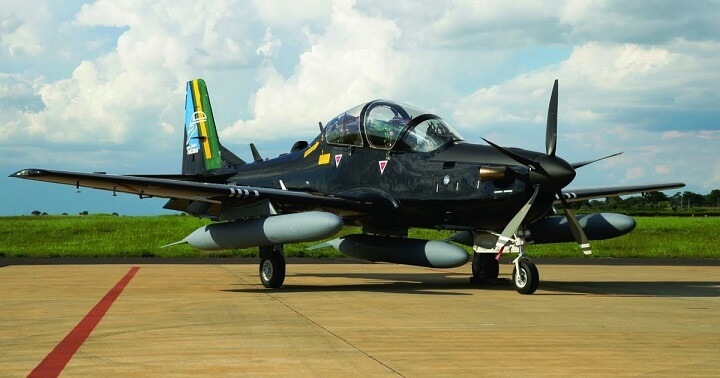
Super Tocano, not so super with those three external fuel tanks. Or even without.
I’ve somewhat dumped on the Super Tocano before. It has a valid purpose for police work in the drug war, but no valid purpose for the military. It’s not nearly fast enough to compete against the jet fighters, and doesn’t have any sort of valid air superiority role.
But it is also not nearly rugged or persistent enough to do CAS. It also uses way too much fuel to justify doing light recon, and doesn’t have good enough low speed performance anyway. In short, it’s MultiRole! and therefore crippled.
Having said that, combining a heavy CAS plane and a LARA plane into one single, somewhat compromised plane may actually make some sense.

The number one thing that we want to maximize in our plane that does air recon is simply using very little fuel. This means we can have more of them. The very low intensity of the work, what with us not finding things much of the time, doesn’t really justify something like an A-10 Warthog. I mean we simply do not have the fuel.

To use a modern example, let’s say we want a plane to get in the air in Afghanistan, and look for the Taliban planting roadside bombs. Since they don’t tell us ahead of time where and when they’re doing this, we need a plane that can use extremely little fuel so that, the vast majority of the time, the pilot can come back to base and tell us that he didn’t see anything of interest. The A-10 needs 11,000 lbs of fuel to, maybe, get 4 hours of endurance. In contrast, the Zenith needs just ~150 lbs of fuel to get almost 5 hours of endurance.

Even if we pretended that their endurance was the same, the Zenith airplane uses 1/73rd the amount of fuel for the same mission, justifying our use of 73 times more of them. Or, more likely, a few more, and then saving that fuel for our fighter planes, surface navy, helis, or whatever else. Remember, all militaries are limited by fuel. The A-10 Warthogs fuel consumption alone simply makes it unsuitable for this kind of role.

Obviously we would be building a tandem seater plane from the ground up, and not the Zenith CH-701. But even having said that, as seen earlier, a plane that light can’t really do that role all that well either, because even in this role it’s going to be taking fire. It’s possible that we can add about 90 lbs of steel to the underside of the plane, but that’s certainly the bare minimum of what we need.
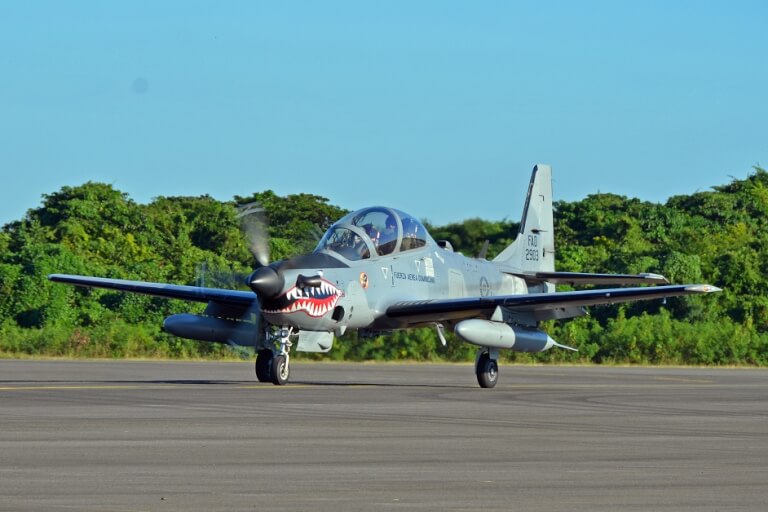
The Super Tocano is garbage because it’s a compromise between ground recon and attack, as well as air superiority fighting. As a result, it offers very little in either militarily, because the designs to succeed at both are fundamentally opposed to each other. Air Superiority demands a high speed turbojet that sacrifices low speed flight, endurance, and armour for maximum performance at high speeds and medium-high altitudes. Low altitude recon and ground attack demands a rugged, armoured plane with a great lift/speed ratio, two prop engines, and good firepower. These are fundamentally incompatible designs.

O-1 BirdDog
But that’s not true for our forward air controller, COIN, LARA, and CAS planes. Those light planes will inevitably be taking ground fire, and thus need to be armoured just like the CAS planes, if not to the same extent. Since they need to be able to gain altitude quickly to leave areas, they need to have somewhat powerful engines. Giving them the structural strength to turn hard makes them far less vulnerable to incoming AAA, ground fire, MANPADS, and regular surface to air missiles.
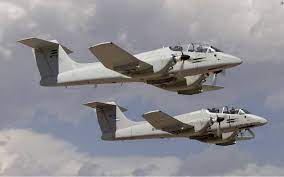
Finally, it’s called Armed Air Recon for a reason, and that reason is that it’s just too useful to put some armament on these planes. To use our COIN example, if you spot the Taliban digging a pit for a roadside bomb, you really might as well have a plane that can squeeze some 50 cals at them and kill them right then and there. Adding a little bit of firepower goes a very long way.
Unfortunately, all of these things add weight to the plane. We can no longer have our adorable little 1,000 lbs Zenith STOL airplane, and the further we go in the direction of adding ground attack performance, the further we’ve gone from fuel efficient recon, and the further we’ve moved to a true CAS plane.

Going in the other direction we have something like the A-10 Warthog. It weighs almost 50,000 lbs when full up, and carries 11,000 lbs of fuel. Tactically, there’s nothing really wrong with using them as recon/patrol craft. However, it seems a Sisyphean task to make the plane fuel economical for doing light recon. If we really wanted that, then weight must be stripped from the plane.

Truthfully, even for CAS the A-10 is massively overweight, what with being saddled with the ability to carry almost 20,000 lbs of bombs at the last minute by the parasitical USAF bureaucracy. There is no compelling reason to have this ability, and the extra structural strength makes the airplane far more sluggish even when clean. A-10 pilots have complained about the plane needing more powerful engines, due to underwhelming ability to regain altitude, but really it just needs to be put on a diet.

It’s also completely unclear whether the 30mm GAU-8 is the ideal weapon for the job nowadays. 30mm shells are no doubt fantastic for shredding infantry, but the high velocity armour penetrating rounds are somewhat pointless nowadays. Simple 50 cals will penetrate every non-armoured vehicle, and for heavier work, even the 100 lbs hellfire missile can do the job just fire. The GAU-8 cannon, with the ammunition and the feeder system, weighs over 4,000 lbs. And remember, every pound brings a friend.
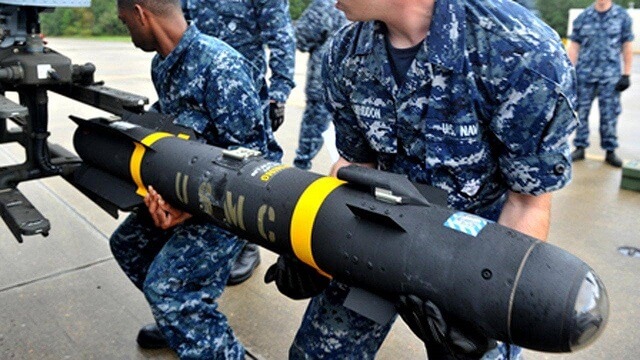
100 lbs hellfire missile.
It’s possibly true that a 30mm cannon is the right tool for the job for heavy CAS, but it’s definitely unjustifiable to make a light recon plane carry a 4,000 lbs cannon system, when some 50 cals would do just fine. Similarly, the plane is armoured against 23mm Shilka fire. That’s probably not so relevant these days, and we could easily aim for 14.5mm heavy machine guns and save more weight.
And of course, prop engines are more fuel efficient, so we’d be getting rid of the turbofans and putting some turboprops on there. Not only that, we’d have a lower T/W ratio, since it’s more fuel efficient to putter around with smaller engines running at higher power.
As far as our CAS performance, the weight savings would give us a tighter turning radius and a smaller target, at the expense of less armour, firepower, and acceleration/climb rate. The current A-10 needs to go on a diet anyway, but there’s no question that, to some extent, we will make our plane less effective at CAS, on a plane for plane basis.
But that’s just the thing, making a smaller plane gives us one tactical and strategic advantage that you may be familiar with me harping on.
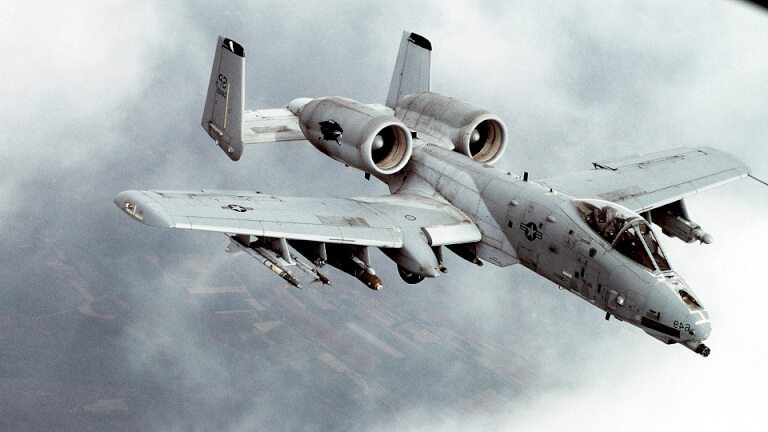
You see, a single A-10 is nice. But do you know what’s better than one?
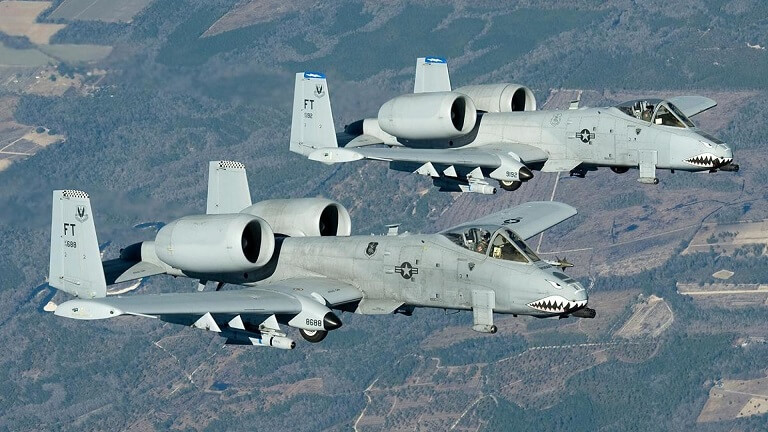
Yes, that’s right, having two. And even better than two, is four.
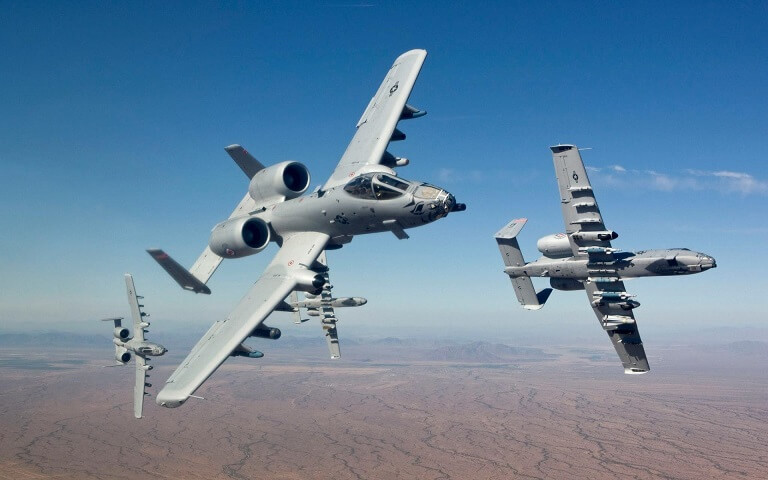
Building something in the design of the A-10 that only uses half the fuel, with minimal sacrifices, is probably possible. Building something that uses 1/4 the amount of fuel probably requires a totally different design, with far less armour and armament. After all, we’d have gone from a plane that weighs about 50,000 lbs, to one that weighs around 12,000 lbs.
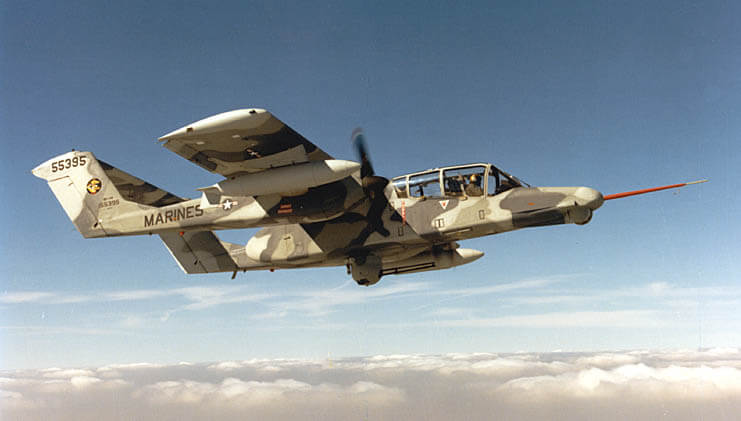
OV-10 Bronco
In other words, we’ve gone to the OV-10 Bronco. Except that we would get to have even greater than 4x as many in the skies, due to the more efficient turboprop engines. For some numbers, the OV-10 Bronco had about 1,700 lbs of internal fuel, which it used to get over 4 hours of endurance from. The A-10 has 11,000 lbs of internal fuel, which gives it, at best, 4 hours of endurance. For the same fuel, we’re looking at about six and a half times more planes in the sky, at the very least.
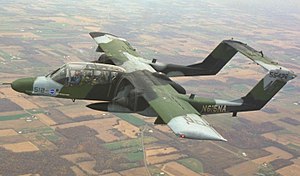
Compared to a truly tiny STOL recon plane, the OV-10 is going to consume about 10-15x more fuel. There’s absolutely no question that this cuts into the size of our fleet. However, the extra armour, climb rate, turn performance*, and munitions most definitely give us drastically more utility compared to a tiny and unarmoured STOL plane.
*The OV-10 was 10G capable. As we’ve seen, structural strength and turning performance are two different things, but there’s no question the thing was agile in the air.
If it’s true that we can get away with putting a small 5mm steel plate on the bottom of the tiny recon plane, and in practice that’s good enough, then we are destroying about 90% of our recon fleet by building this design*. On the other hand, if we need to start adding even more armour and larger engines, etcetera, just to get the minimal performance from our recon plane necessary to have enough survivability to be useful, this advantage begins to go down.
*To be clear, another important factor is the sheer number of recon planes we want. Unlike jet fighters, where we want as many as possible, within reason, recon planes can over-saturate an area. We don’t need forty planes flying next to each other looking for aircraft carriers, as one obvious example. If we only need a few, fuel efficiency is not so important. I suspect that we will want more like a few thousand.

A-1 Husky
When looking at our one planes performance when doing CAS, there are some positives. We’ve got a bit better turning radius compared to an A-10-esque plane. We’ll have a bit better endurance per plane. We’re a smaller target.
But mostly the advantage is that we have 5-10x more planes in the sky. And we’re going to need to hope that we’re close enough in performance that our numbers advantage is the advantage that we want. Personally, I strongly suspect that it would be, but I can’t say that I know.

What? It’s important.
There are two competing ideas here. It could well be better to build an extremely lightly armoured recon plane around the size of the CH-701, or Aviat Husky, and then build a second, very heavy CAS plane like the A-10 Warthog. It could also be better to simply build one plane that doesn’t have nearly the firepower or armour of the hog, and doesn’t have nearly the fuel economy of the Husky, but can do everything we want to a pretty reasonable extent. There are tradeoffs, and arguments to be made both ways.

I actually suspect that a single plane is the right way to go. Supporting this position I will point out that we could make a hotter, lighter version of the OV-10 Bronco.
The Air Force was able to add about 1000lbs of electronics to the no longer simple aircraft system, ostensibly to support the limited FAC role. BUWEPS set out early to specify the aircraft to failure starting with an unprecedented requirement to demonstrate operations from two specially constructed runways with different frequency sine wave undulations. No other vehicle could negotiate these runways at more than 10-13mph. This added another unnecessary 1000lbs, but in the end the airplane met the requirement (even though the pilot couldn’t).

Keep in mind, that’s not the entire weight of the landing gear, and airframe of the Bronco. That’s just the additional landing gear weight that was added to the Bronco by a specification designed to stealthily kill the program.
This is a plane that was forced to weigh over 2,000 lbs more than it ought to have due to bureaucratic malfeasance. And remember, every pound brings a friend.

We could build a much more heavily armoured and armed version of the OV-10 Bronco for the same weight, and fuel consumption. But we could also make an even smaller, and more fuel economical version of the OV-10 Bronco. And you know what that means, right?
It means we could have more of them.
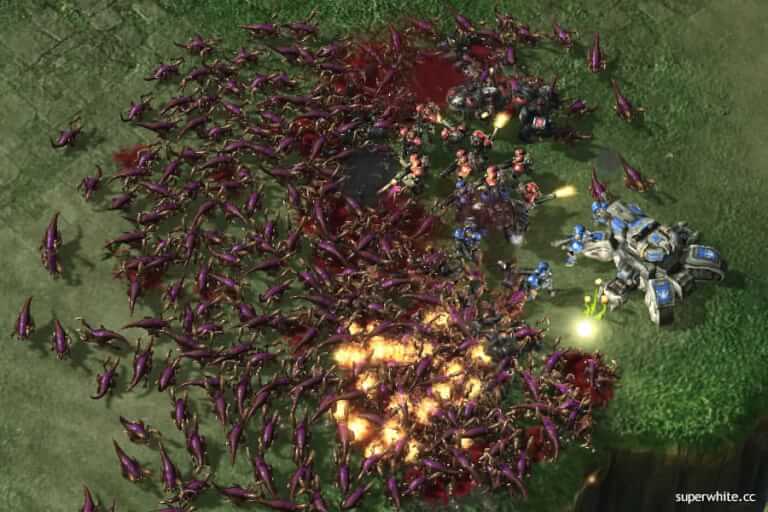
After my last article I got a hilarious satirical comment on poast that I’ll eventually be turning into some short satirical article.

It’s a great comment, but there’s one thing that I feel the need to make perfectly clear. I do not give a single fuck about the cost, in terms of dollars. I only care about the utilization of precious resources, most importantly fuel. It would massively decrease the cost of the fighter plane to build them out of the good old fashioned aluminum alloys they used to be made out of. Carbon Fiber Composites, and titanium alloys are most certainly not cost reduction features, but they are weight reduction features.
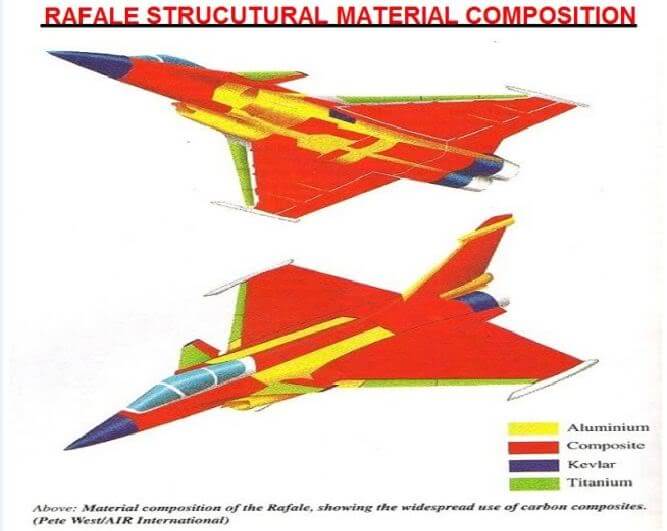
This increased cost is, in my opinion, more than justified. Air combat is competitive, and we want to save every pound possible.
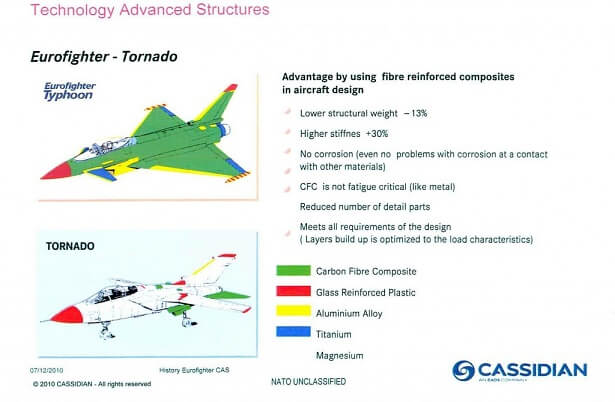
Saving weight in this way puts us on the other side of the weight spiral, the good side. Where every pound that leaves brings a friend. Where we can have less structural strength to get a 10G capable airframe. Where we need even less heavy landing gear. Where we need smaller engines. And so on, and so forth.

Eurofighter Typhoon again.
Manufacturing these planes from these exotic materials is just about the one serious thing about them. Things would change if you need to manufacture them in the middle of a serious war, in which case yes, an aluminum alloy design is preferable. But I just feel the need to explicitly say that we’re building more fuel efficient vehicles so we can have more of them, not so that we can save money on the military budget.
So understand that when I say that I think that OV-10 Bronco might still be too big. I think we can go smaller.

HOW MUCH FIREPOWER DO YOU NEED?
The A-10 is in many ways a great plane. But the existence of its 30mm cannon seems to trigger this weird impulse in people. The same goes for when you have an unarmed vehicle, and then you put a little bit of firepower on the thing. Or when you put a tiny bit of armour on something.

It’s like the second that a vehicle gets some killing ability it must absolutely be able to destroy the entire enemy military all by itself and singlehandedly win you the entire war. And the second it gets armour against small arms, it must also be able to stop a tank cannon, with a nuclear warhead.
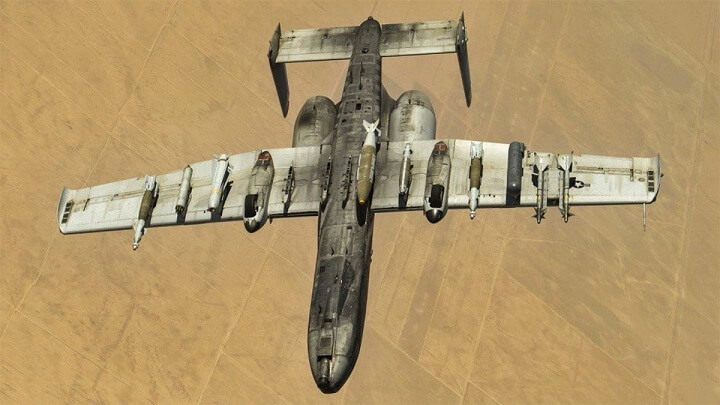
The astute reader might have noticed something a little bit odd, when I referred to putting a 50 cal on the air recon plane as “adding a little firepower.” A 50 cal isn’t a little firepower, it’s just turned the plane into a heavy machine gun squad, that flies.
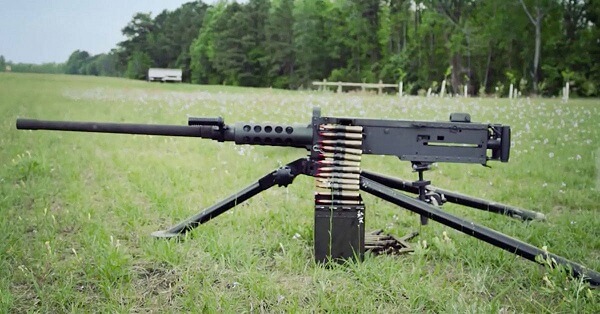
I’ve never served in the military, but one time when I was at the shooting range the guy in the stall next to me rented out a 50 cal. I don’t know exactly what model, but my god was that thing a beast. Even with the earmufflers it was loud, and there was this shockwave from the firing that I somehow felt despite being shielded by a wall in between us.

Me, but unironically.
Excited, and also scared all at the same time. But it’s more than simple coolness. The 50 cals, or the Russian 14.5mm equivalent, which is about twice as big, is the most efficient round to fire. It will absolutely shred the human body, penetrate through any unarmoured vehicles, and even into buildings.
There’s no question that a high velocity 30mm explosive round is even better, all things being equal. But all things aren’t equal, and we can’t put a 4,000 lbs cannon system onto a plane that weighs 5,000 lbs now can we?

Although that’d be fun.
No, we can’t. Or… can we?

No. It would be absolutely hilarious, but that thing wouldn’t fly. Or… would it?

No actually that wouldn’t work. If we want smaller planes we just flat out need to delete the 30mm cannon.

Look, I’m not thrilled about it either, but as captivating to the imagination said 30mm is, it may have outlived its usefulness. While it’s not true that the cannon in general exists solely to destroy Soviet Tanks, but rather pretty much everything else, the 30mm caliber specifically was chosen to punch through the tank armour of the day. And it’s not really clear that it can still do that to the current tanks.
Furthermore, it’s not really clear that hyper focusing on tanks is all that important. I mean, if tanks are a big problem then may I remind you that you’re in a plane? Go fly over to the fuel tankers and blow them up and then the tanks will cease to be a problem in a few hours time.
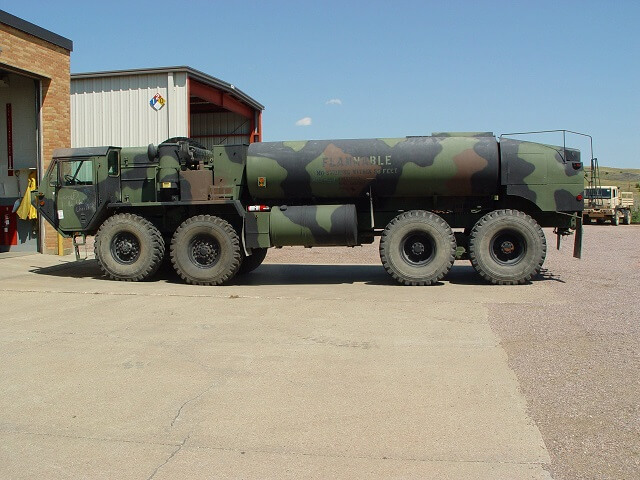
Look, I’m aware that it’s not that simple, but even if you absolutely needed to murder some tanks, we’ve got missiles and rockets for that. And once again, if you’re going to be murdering said tanks, you’re going to have to deal with some people who aren’t so thrilled that you’re trying to murder said tanks.
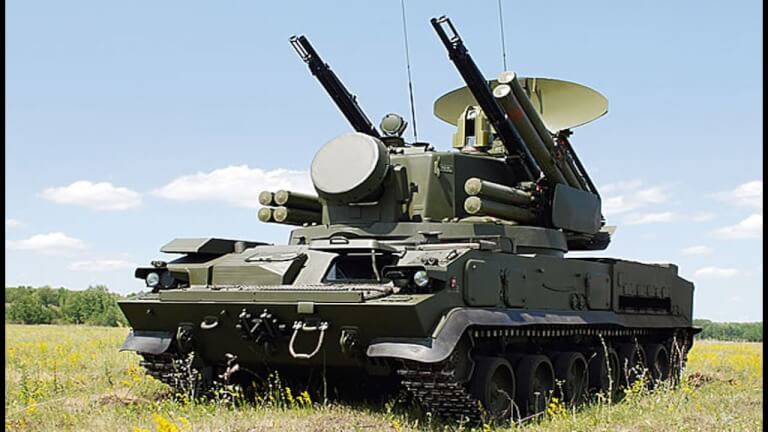
Russian Tunguska SPAAG.
The focus on firepower is sort of annoying. It skips over finding the enemy, any ignores any sort of realistic tactics in favour of simplifying things to simply putting them within range and pressing a trigger. As I stated earlier, there is no compelling reason to think that having more light CAS planes in the sky is not a tactical advantage similar to having more infantry, artillery, tanks, fighters, and everything else.

In terms of firepower our light CAS plane may have the ability to carry less than 1,000 lbs of missiles, rockets, and bombs. Perhaps something like 1x500lbs hardpoint on the bottom of the airframe, and 2×100 lbs hardpoints on each wings. After all, adding more structural reinforcement strength adds weight, even when we aren’t loaded up, and every pound brings a friend.
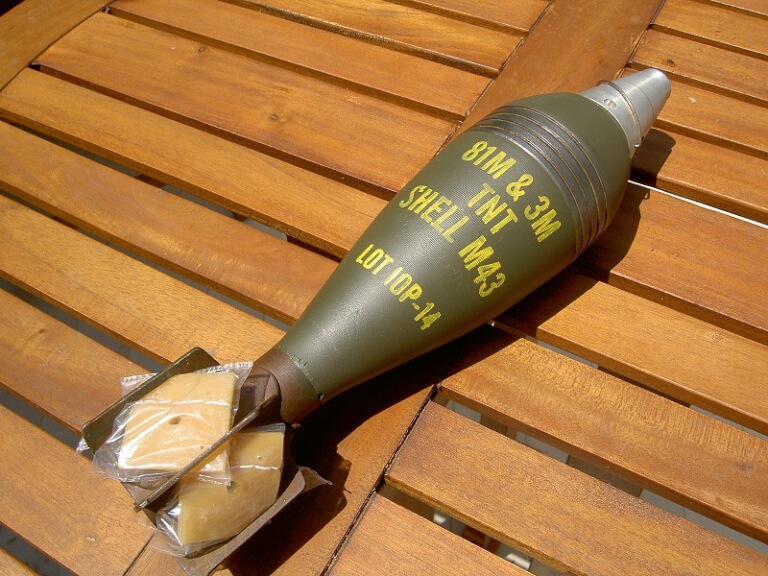
And yet this “pathetic,” armament load of “just” 900 lbs is… drastically more than a mortar team. And arguably we can deliver more accurate fire. And the the standard 155mm shell weighs just under 100 lbs.
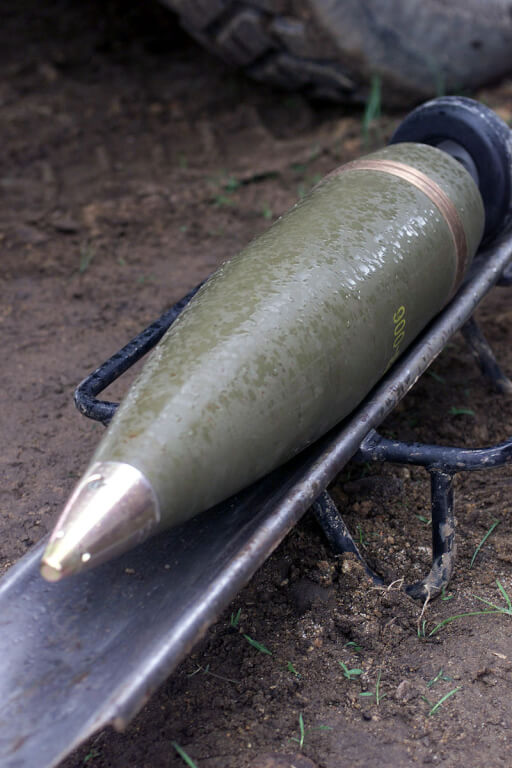
Yes, dropping a bomb at low speed is different than a shell supersonically hitting something, but it’s not entirely different.
And if we really wanted to, we could always put nukes on the thing.

W82 155mm shell. 2kt power.
And not just one, but four of them.

But really, we can even ignore the nukes. I get that big explosions captivate the imagination, but so much of this over-emphasis on firepower stems from the military bureaucracies bloviating about how these fast and high flying jets can totally do CAS because they can truck some bombs into the area.
The hard part is finding the enemies, and coordinating with our side. Well that and not getting killed by them, which makes us not want to be trucking 20,000 lbs of munitions even more.
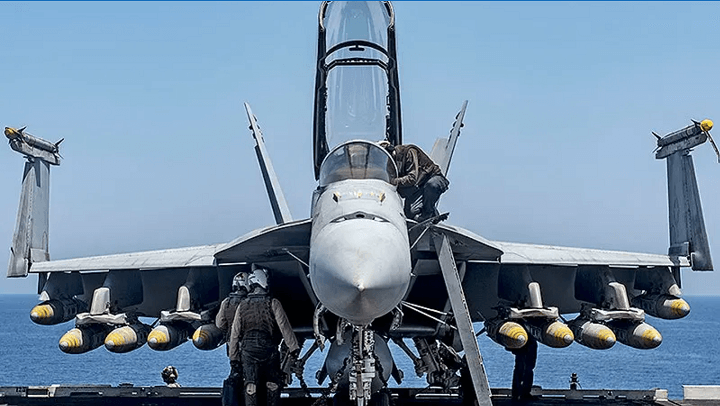
Look, I like jet fighters. I don’t really like how much fuel they guzzle down, but I like their ability to do air combat. Loading them up with thousands of pounds of bombs doesn’t magically give them the ability to find things on the ground. The armament that a pilot has at his disposal is entirely irrelevant if he can’t find the things to destroy, and he’s so loaded down with bombs that he’s an easy target.
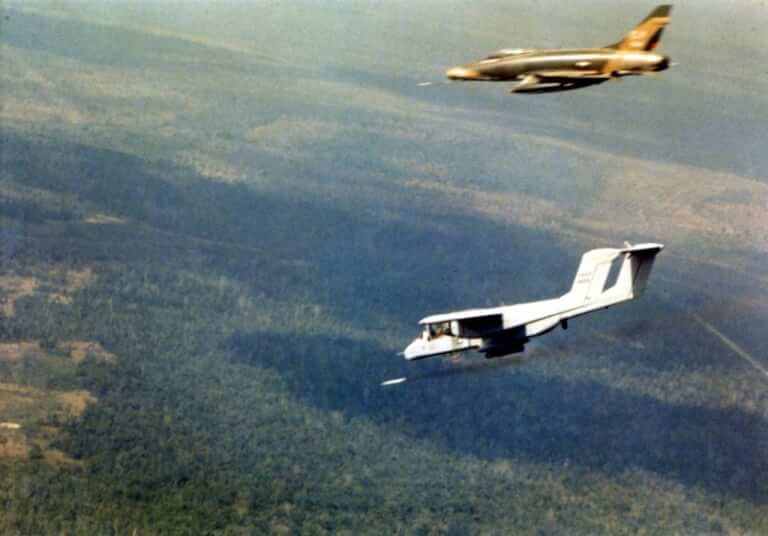
OV-10 Bronco firing a marking rocket in the area for a fighter/bomber. Cause fighters can’t find squat on the ground.
But even then, our light CAS plane is a flying heavy machine gun squad plus a few artillery rounds, and we should have tons of them. Not sure why that isn’t firepower enough.

IA-58 Pucara. Another decent light CAS plane.
Looking at it from the skies down is the wrong approach. Instead, imagine we took an infantryman and gave him a jetpack so he could fly around and see things from whatever vantage point he wanted. And not just that, but fly at speeds of hundreds of kilometers per hour to wherever he needed to be.

Then imagine we armoured him against small arms, and even 7.62 machine guns. Then we gave him not one, but two M2 12.7mm heavy machine guns. And finally, we let him pick up four 100 lbs bombs to drop them on people, or something like 28 rockets, along with a 500 lbs bomb. We would call that some sort of crazy science fiction supersoldier.

Kind of like this guy, but literally better.
Well, that guy doesn’t exist of course. But we can instead build a light CAS plane, that’s pretty much just as good.
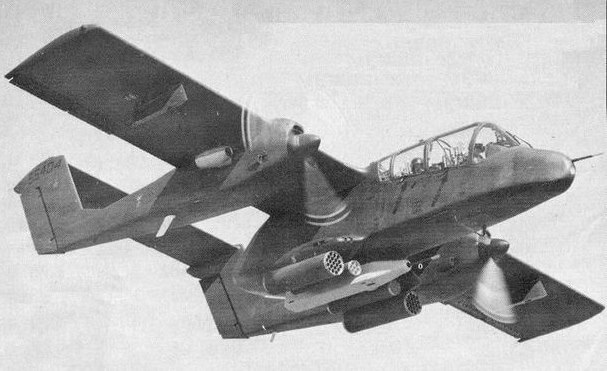
Okay I’m being facetious, but only somewhat.
I remember when doing my flying lessons looking out at the world and thinking two things. First, it’s amazing how much you can see at just 100 feet altitude.

This doesn’t even do it justice. Imagine this but all around you in every direction. And you can fly higher or lower for a different view.
And my second thought was “I’ve got this sudden urge to divebomb.”

I’ll leave you with more from W.H. Beckett.
These operations quickly confirmed that the Bronco was an excellent weapons platform.
To be brief, he just finished explaining how ridiculous politics from the USAF bureaucracy actually prevented the OV-10 Bronco from receiving anything other than marking rockets for much of Vietnam. This was because they were only allowed to have 4,000 combat aircraft, so they artificially prevented the OV-10 from carrying serious weapons, at least for a while.
But I mostly just wanted to highlight this next part, to once again destroy the buzzword of MultiRole! airplanes. And keep in mind, this is in addition to simply being a thing that finds targets and fires bullets.
The Marines also demonstrated the aircraft’s unique effectiveness in reconnaissance, artillery and naval gunfire spotting, FAC airborne, light attack and helicopter escort. In addition they demonstrated the capability to lay a tactical smoke screen so successfully that it took much longer than planned to get the demo aircraft back to the States. The users didn’t want to let it go.

This is not an OV-10 Bronco lovefest. Even Beckett is quite critical of the airplane.
This is a capability that has had great value historically, yet in Vietnam we had no other capability that this OV-10. Jets couldn’t get low enough and helicopters were unstable. Today, we have no such capability at all.

Because once again, it isn’t profitable. As I said before, rugged steel construction, prop engines, and unguided munitions do not leave room for bullshit fake “high tech” non-sequiturs that allow our parasitical bureaucracy to make profits off of the planes.
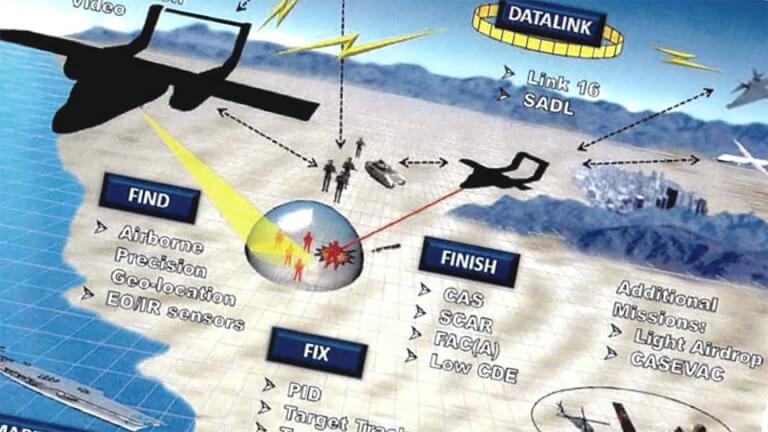
Although they tried…
People really need to get over the idea that the military industrial complex is secretly the one part of our society that isn’t completely and utterly run by malicious and evil people.

That these inexpensive, and low-fuel consuming airplanes provide us such tremendous military capability is entirely irrelevant to them. That we quite literally have less low altitude air support than we did during WW2 is also entirely irrelevant to them. They’ve got a billion buzzwords to pretend to justify this, but mostly these types just bribe politicians, and that’s that.

But anyway, that’s neither here nor there. Don’t ever fall for the firepower uber alles garbage, where simply having things that explode real good means that the enemy military will be exploding real good.
And if there’s one thing to takeaway from this piece that’s relevant for jet fighters it’s the weight spiral. How adding weight to the plane leads to dramatically more weight added to the plane as it gets re-balanced and copes with the increased weight. As I said, every pound brings a friend.
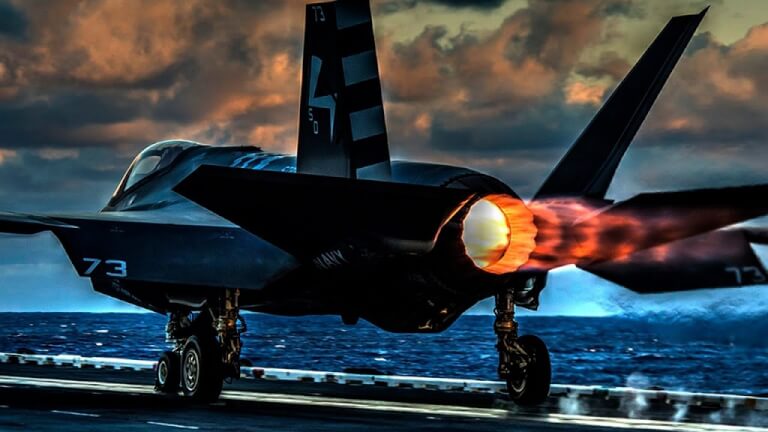
Not that I had anyone in mind.

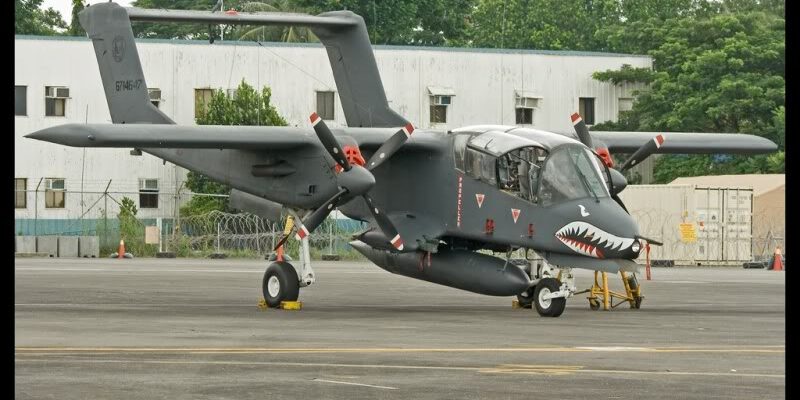







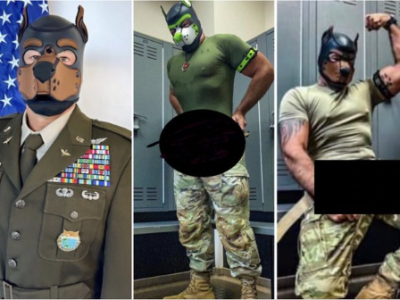






What are your thoughts on the importance of pilots and their training time? Wouldn’t all that tech/weight justify saving the pilots life given the difficulty replacing them?
Simply put, no. You should be training more pilots than you need in peacetime, just like you should be building more fighters than you need. And the weight for fighters doesn’t do anything except put more money into the pockets of various contractors.
Adding the weight in terms of armour to the light CAS plane is more justifiable, and there’s a sweet spot in terms of armouring versus having less planes. Only realistic testing could tell us exactly how much armour we can justify on the plane.